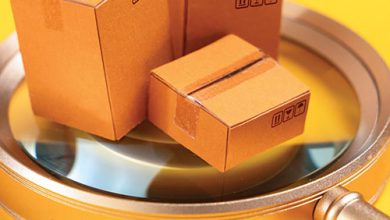ARTIFICIAL INTELLIGENCE
AI
THE GOOD, THE BAD AND THE CREEPY OF IT
BY Angelo Fernando
It seems that there’s an app for everything and every form of paranoia. With the lines blurring between convenience and creepiness, what are we getting ourselves into? I’ve heard that some people programme their smart speaker to turn on the coffee maker – but that’s at the benign end of the spectrum.
Some also consider Siri and Google indispensable to homework. ‘OK Google! What was the date of the collapse of the Roman Empire?’
But does one really need a toothbrush with AI or lightbulbs that can play music? As a teacher, I hear stories from those experiencing the Internet of Things firsthand – the good, the bad, the hilarious and the unsettling.
One student explained how, over a newly acquired Echo smart speaker, Alexa started playing a parent’s favourite music when it detected discussions pertaining to a bereavement in the family. This was after the parent had reprimanded Alexa, saying: “Alexa, turn off the microphone!”
More common are incidents of someone in the family accidentally ordering products from Amazon because Alexa was eavesdropping. Some stories are even funny! In January 2017, a six-year-old asked her Amazon Echo: “Can you play with me and get me a doll’s house?” It understood “get me a doll’s house” to mean order one – and promptly did so!
The Verge reported that the story didn’t end there. It was featured on a TV show and at the end of the story, the anchor had exclaimed: “I love the little girl saying ‘Alexa ordered me a dollhouse’.”
You can imagine what happened next – all the homes with Amazon Echo devices where the TV was on promptly placed orders for doll’s houses!
I’ve been writing about the Internet of Things for some time now and find that it falls into three categories – viz. tech company scandals and lawsuits, gee-whiz discoveries, and convenience and laziness.
What gets me is the last one – meaning how quickly people appear to hand over simple tasks to gadgets. Don’t get me wrong. We do need gadgets and to depend on appliances. Imagine if we have to connect two wires every time we needed to turn on a lightbulb? A humble device called a light switch solved that. Some of us still use maps to get from point A to B but Google Maps makes travel a lot easier.
So what about an app called SitOrSquat, which is a bathroom finder?
I kid you not, this is from the makers of toilet tissues Procter & Gamble, which explains it like this: “With SitOrSquat, we put clean public toilets on the map. Literally. Clean locations have a green ‘sit’ rating and less desirable ones have a red ‘squat’ rating.”
So while I’m not about to throw the baby monitor out with the bathroom finder, I can’t imagine why one would need a phone app to open the window blinds or use voice activation to talk to the thermostat. ‘Alexa, turn on the bedroom fan!’
It’s no surprise that we’re facing prickly privacy issues because we have given smart devices too much access to our private spaces. These gadgets hunger for more data and will get it even by snooping.
Consider these recent revelations: Apple’s FaceTime eavesdropping bug; Google Nest’s hidden microphone; Alexa eavesdropping on a family in Portland; Mom discovering that a baby monitor camera was spying on her; and many popular apps secretly sending data to Facebook (even if you don’t have a Facebook page!).
These are all instances of companies or appliances vacuuming the kind of data that governments and surveillance agencies once extracted with subpoenas and wiretaps. In the case of the baby monitor, a mother discovered to her horror that the US$ 40 device with a convenient phone app was hacked: “I looked over my phone and saw that (the monitor) was slowly panning across the room to where our bed was and stopped.”
What happens when a smart device gets too smart for your liking… and decides to change your thermostat setting? Or could a present day HAL, as in the case of the book or movie 2001: A Space Odyssey, decide not to let you into your home?
I bring this up half in jest because there’s such a smart home interface called HAL (Home Automated Living system!).
Here’s how the manufacturers put it: “HAL® allows you to use a web browser to log on to your home and control lights, appliances, audio, video, security and thermostat settings, all from one app.”
One day, let’s hope someone with a smart home appliance doesn’t have to say: ‘Open the pod bay doors, HAL…’ – and receives this response: ‘I’m sorry Dave. I’m afraid I can’t do that!’








